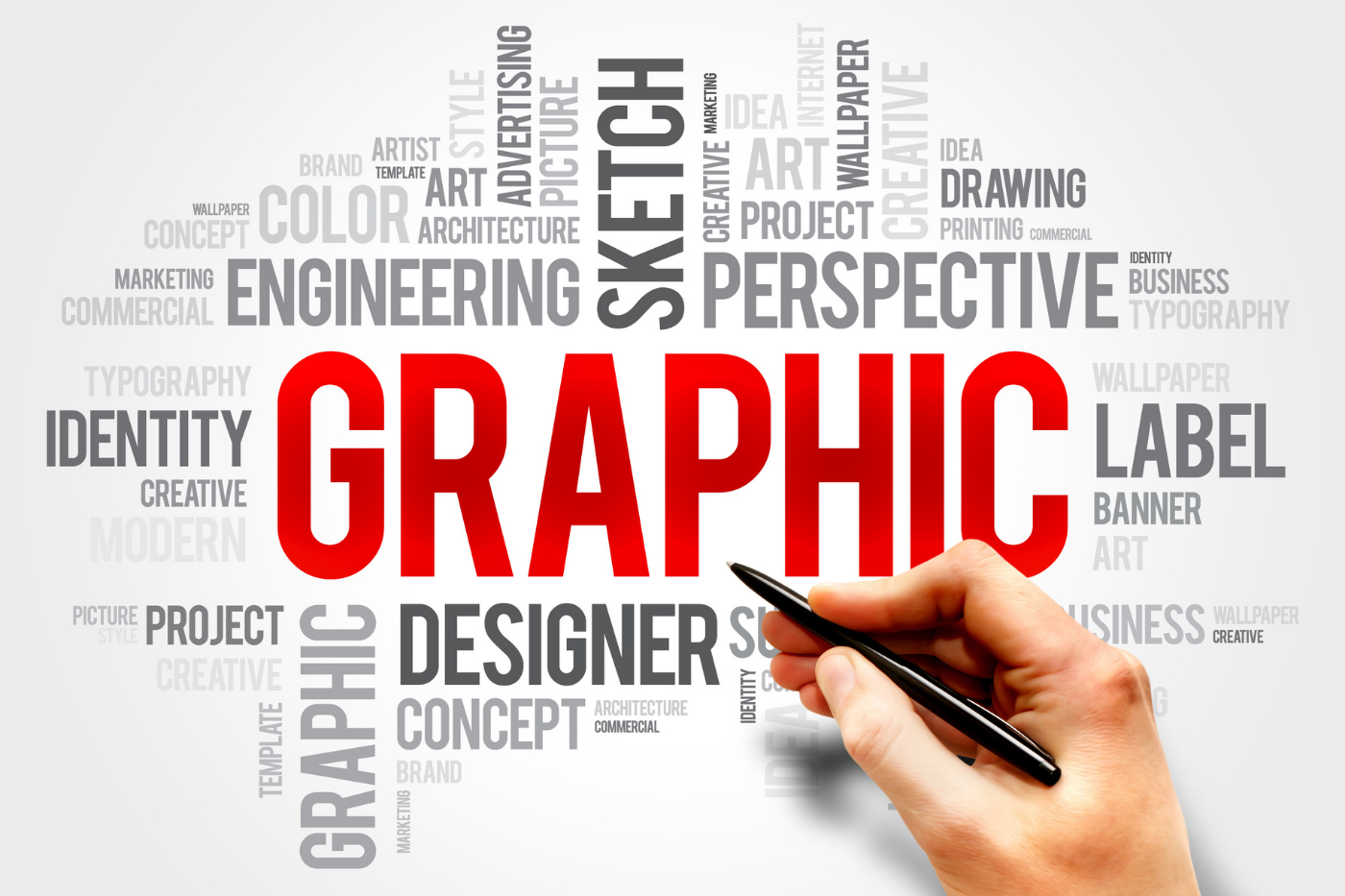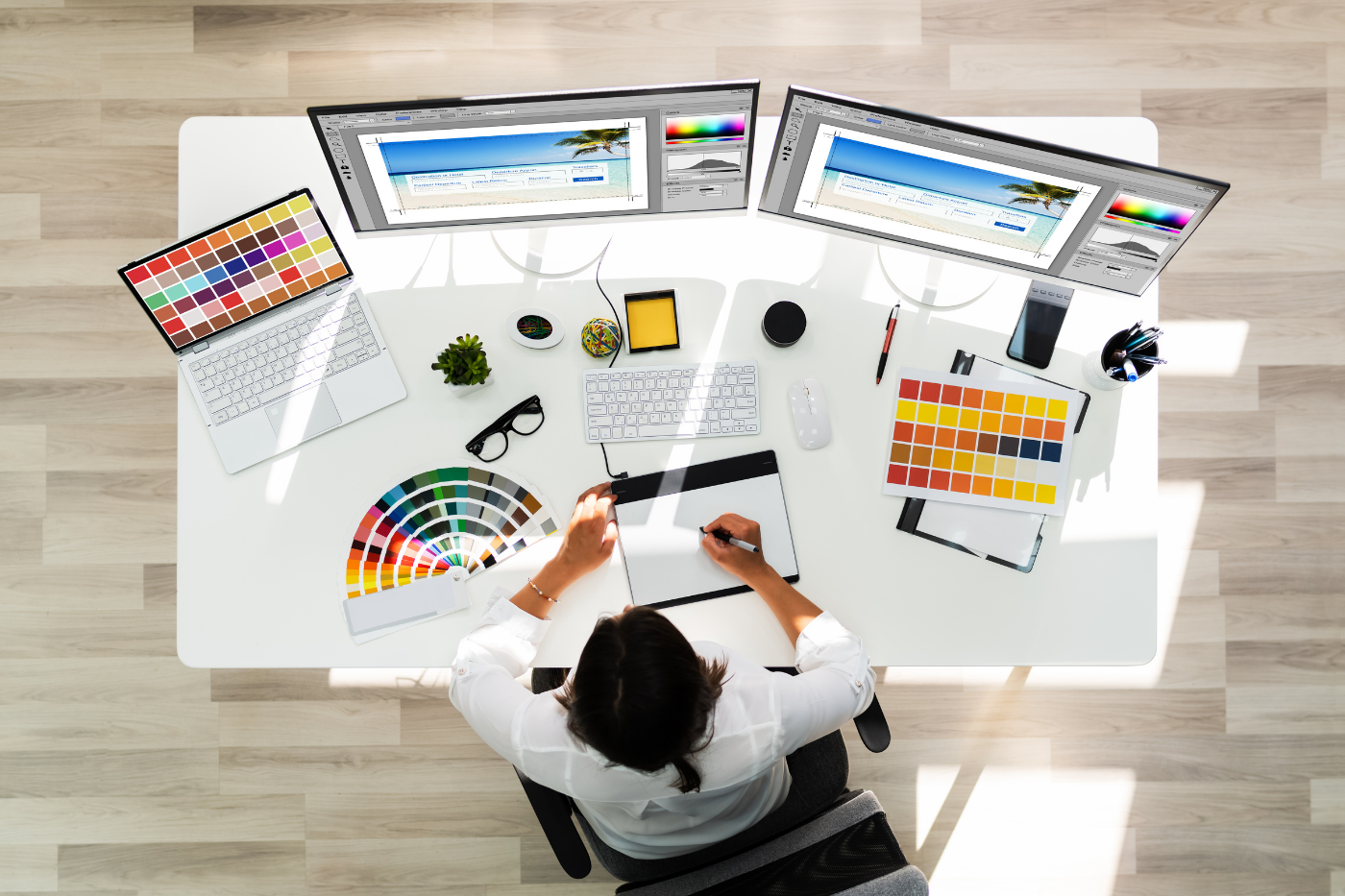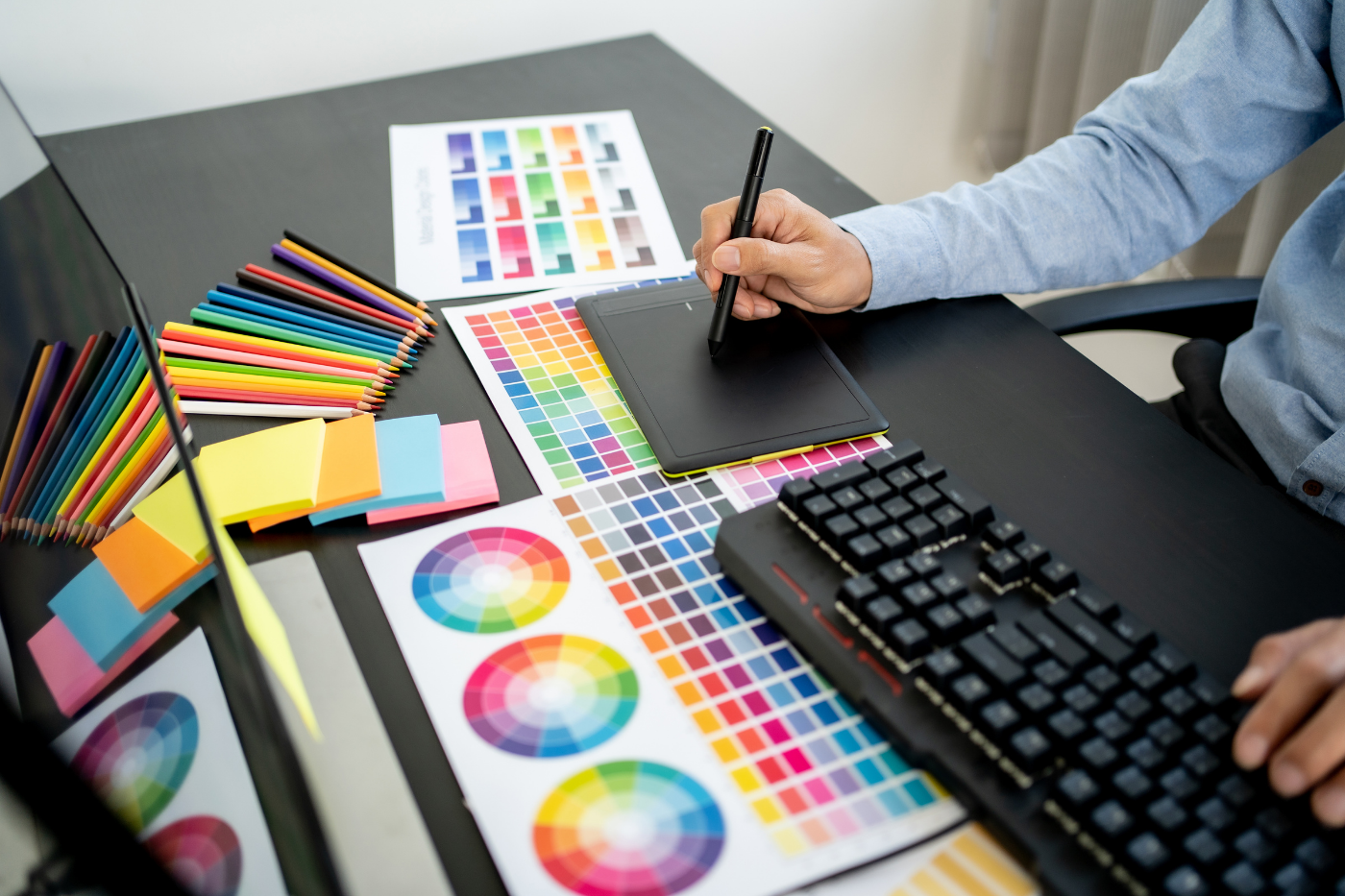BLOG'S

Green UI/UX Trends: Designing for a Sustainable Future
As tech races ahead at breakneck speeds, the UI/UX design field is more and more focused on the issue of sustainability. Society as a whole is becoming environmentally conscious, and so is the world of cyberspace. Green UI/UX trends are reforming the ways we create and engage with digital products, laying huge importance on energy efficiency, responsible design, and eco-sensitivity.
This piece examines the essence of Green UI/UX trends, what defines a suitable design, the benefits of green design principles, why sustainable UI/UX design is the future and how Fabmediatech is charting that path with its new-age UI/UX design services.
What Is Green UI/UX Design?
Green UI/UX design refers to the act of creating user interfaces and experiences that do less harm to the environment. It entails thoughtful design decisions such as:
- Utilizing Eco-friendly images that are optimized to be data light.
- Opting for sustainable colors such as c-green colour which are reminiscent of nature and serenity.
- Utilizing effective code that minimizes the energy burden on servers.
- Designing with accessibility and longevity.
These methods as a whole minimize the carbon footprint of digital products yet maximize user engagement and loyalty.
What Is Appropriate Design in a Sustainable Context?
In the world of sustainable UI/UX, a suitable design is not only beautiful—it's usable, accessible and eco-conscious. Appropriate design prioritizes:
- Visual design principles that ensure clarity, consistency and minimalism.
- Lighter pages that consume fewer server resources and energy.
- Accessibility for everyone regardless of demographics and ability.
- Device responsiveness to ensure longevity and fewer redesigns.
A suitable design enables the user experience while balancing for sustainability—enabling brands to become ethical in practice without diminishing user happiness.

Advantages of Green Design Principles
- ✅ Energy Efficiency: Tuning designs to use less power—both on user equipment and web servers—minimizes greenhouse gas emissions. This encompasses the utilization of compressed Eco-friendly images and minimalistic layouts.
- ✅ Improved Performance: Lean, minimalist UI/UX design trends load websites quicker and run better on low-bandwidth networks or old devices.
- ✅ Brand Loyalty: People are more inclined to support companies that share sustainable values. A Website design that communicates eco-friendliness induces trust and loyalty.
- ✅ Cost Savings in the Long Run: Streamlined, sustainable designs are simpler to maintain, modify and expand—enjoying the benefits of fewer long-term development and operational costs.
- ✅ Enhanced Accessibility: Inclusive, sustainable designs include all users, making it more usable and widening your audience base.
Why Is Sustainable UI/UX Design the Future?
In an era of climate change and overconsumption in the digital space, sustainable UI/UX design is not just a trend but a necessity. Here's why:
- Increased Digital Carbon Footprint: Each online interaction adds to global carbon emissions. Optimizing Design carbon is vital to minimize environmental harm.
- Conscious Consumer Behavior: The consumers of today actively look for brands that are pro-sustainability. A Portfolio website design with green themes can make a difference in purchasing decisions.
- Global Regulations & Standards: Governments across the globe are implementing policies that promote or mandate sustainable digital behavior. Adopting Green UI/UX trends today guarantees compliance and preparedness in the future.
- Innovation and Competitive Advantage: Embracing green design provides businesses with a distinct advantage. Best design websites today aren't only aesthetically pleasing–they're eco-friendly, quick and user-focused.
Discovering Sustainability with Fabmediatech UI/UX Design Services
At Fabmediatech, sustainability is the core of each user interface and user experience design solution. The business has adopted the spirit of green trends-unisex, merging aesthetic variety with ecological sensitivity.
- Green Branding with c-green Colour: Fabmediatech often incorporates c-green color in its designs, a color that represents harmony, sustainability, and innovation.
- Optimized Eco-Friendly Images: Lightweight yet high-quality images reduce page load time and save energy.
- Visual Design Principles for Sustainability: Functionality, simplicity, and minimalism ensure long-lasting, user-centric digital experiences.
- Design Carbon Awareness: The company tracks and reduces digital carbon emissions at every stage of the design process.
- Green Website Design Login Page: Even the login pages are light and fast, with no unnecessary scripts or heavy files.

UI/UX Design Trends Creating a Greener World
- Dark Mode: Saves energy on OLED and AMOLED displays while staying stylish.
- Minimalist Interfaces: Clean layouts use fewer resources, boosting both performance and sustainability.
- Responsive Design: Ensures long-term usability across devices without frequent redesigns.
- Eco-Friendly Navigation: Simple menus and pathways reduce clicks, saving bandwidth and energy.
- Microinteractions: Small, efficient animations enhance UX without draining battery life.
Finding the Right Partner: Website Designer Near Me
Looking for a website designer near me who values sustainability? Choose partners like Fabmediatech who actively integrate green UI/UX practices into every project. Together, you can build a digital future that's both innovative and eco-conscious.
Case Study: Sustainable Portfolio Website Design
- Plain background with c-green accents.
- Eco-friendly images with texture and minimal weight.
- Responsive design using the latest UI/UX principles.
- Fast-loading, energy-efficient website login page.
This sustainable design lowered carbon emissions by 40% while boosting user interaction and satisfaction.

Define User Interface Design in a Sustainable World
Today’s user interface design is not only about looks. It’s about creating lighter, healthier, more inclusive digital experiences. Designers now have a duty to the planet and the people who use their creations.
How to Start Developing Eco-Conscious Digital Products?
- Select environmentally friendly hosting companies.
- Utilize compressed and eco-friendly images.
- Implement visual design principles focusing on simplicity and clarity.
- Measure and minimize design carbon emissions.
- Work with agencies that specialize in sustainable UX/UI.
- Eliminate unnecessary plugins and scripts.
- Audit your site’s environmental impact regularly.
Conclusion: Designing with Purpose
Sustainability in UI/UX is a promise to future generations. As the digital world grows, we must ensure its green footprint shrinks. Choose sustainable UI/UX, optimize your design, and work with eco-conscious teams like Fabmediatech to make a real impact—one interface at a time.